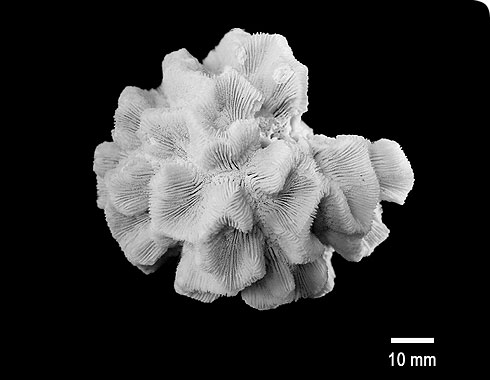Reproduction
Colonies are not reproductive until they reach a height of 1.5 to 2cm, which usually takes 2 to 3 years.
Individual colonies produce hundreds to thousands of larvae each year.
Ovaries and spermaries develop on mesenteries that hang between septa.
Gametes mature in late spring, and sperm are released on one or a few nights around the full moon in May or June.
Fertilisation is internal, and small pear-shaped larvae are brooded in the stomach of the mother colony for two weeks.
Larvae are released synchronously on the night of the new moon, possibly because the darkness provides some protection from predatory fish.
Larvae are probably viable in water for a few weeks, but are able to settle immediately.
Many settle quickly and maintain dense populations in suitable habitats (up to 50 per square meter in places along the Caribbean coast of Panama).
Toolbox
Glossary
Corallite
The skeleton of a coral polyp.
Columella
Small column-like structure.
Meandroid
Colony composed of corallites in linear series within the same wall.
Mesenteries
Fleshy septa connected to an oral disk. Mesenteries occur in pairs and flow like curtains.
Septa
Partitions between two cavities.
